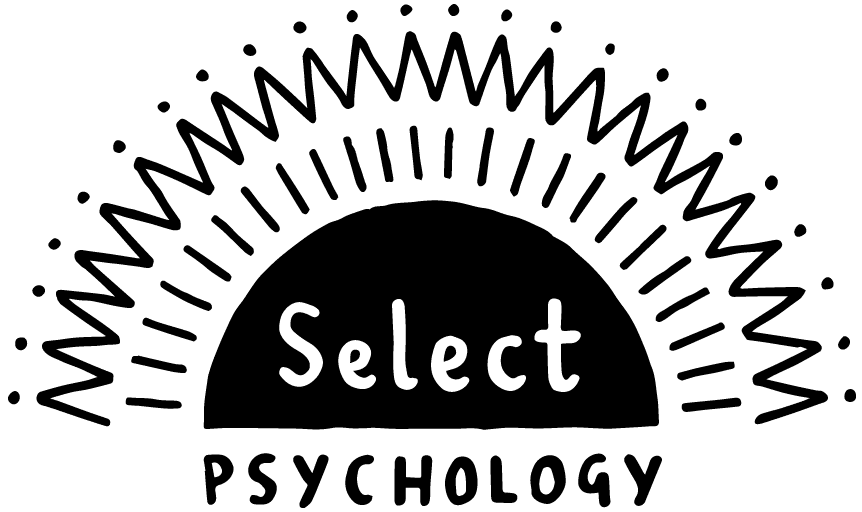Relationships are as diverse as the people in them. Ethical non-monogamy (ENM) is an umbrella term for consensual, non-exclusive relationships, with multiple partners. Here we’ll explore 9 types of ethical non-monogamy.
For many, ENM is a path to greater emotional and romantic fulfilment. This blog explores various forms of relationships and why people choose them.
Key Takeaways
- Ethical non-monogamy includes various relationship types like polyamory, throuples, relationship anarchy, and monogamish, each offering unique dynamics and fulfilling different needs.
- Successful ethical non-monogamy relies on open communication, clear boundaries, and mutual consent to maintain trust and respect among all parties.
- People choose ethical non-monogamy for personal growth, emotional variety, and the ability to meet diverse needs, leading to more fulfilling and honest relationships.
What Is Ethical Non-Monogamy?
Ethical non-monogamy (ENM) refers to relationships where all parties agree to engage with multiple partners. This agreement is built on communication, consent, and honesty, ensuring everyone involved is fully aware and supportive of the arrangement.
Unlike cheating, which often involves secrecy and betrayal, an ethical, non-monogamous relationship is rooted in transparency and mutual respect. ENM is about forming connections that fit individual needs and desires, allowing people to explore romantic and sexual relationships in a way that feels authentic to them.
It’s not a one-size-fits-all model; each type of consensual non-monogamy offers unique dynamics, catering to various preferences and lifestyles. ENM provides a framework for creating diverse and fulfilling relationship experiences by prioritising open dialogue and ethical considerations.
Types Of Ethical Non-Monogamy
Ethical non-monogamy encompasses various relationship structures prioritising consent, communication, and mutual respect. Here are some key types of ENM that people practise to build fulfilling connections.
Polyamory
Polyamory involves having multiple romantic relationships simultaneously, with everyone’s consent. It’s about forming deep, emotional bonds with more than one person, allowing love to expand rather than being limited to a single partner.
This relationship structure requires excellent communication and trust among all parties to respect everyone’s needs and boundaries. Polyamorous relationships are ideal for those who believe in the possibility of loving multiple people profoundly and simultaneously.
- Example: Sarah is in a polyamorous relationship with Tom and Lisa. Both Tom and Lisa are aware of each other and have a friendly rapport. Sarah spends weekdays with Tom and weekends with Lisa, enjoying different activities with each of them. They communicate openly about their feelings and boundaries, ensuring everyone feels respected. Occasionally, they all have dinner together, celebrating their unique bonds and the expansive love they share.
Hierarchical Poly
Hierarchical polyamory prioritises certain relationships over others, typically designating a primary partner and secondary and tertiary relationships. This ethically non-monogamous relationship structure helps manage time and emotional investment by establishing clear priorities and expectations. Ensuring all parties feel valued and respected within their designated roles is essential.
This form of ENM requires careful balancing to maintain harmony and prevent feelings of neglect or jealousy.
- Example: Alex has a primary partner, Jordan, with whom he lives and shares most of his life. He also has a secondary relationship with Taylor, whom he sees twice weekly for dinner and activities they enjoy. Jordan and Taylor know each other well and respect their different roles in Alex’s life. Clear communication and set expectations help ensure that both Jordan and Taylor feel valued and respected, preventing feelings of neglect.
Solo Poly
Solo poly individuals prioritise their autonomy and do not seek primary partnerships, maintaining multiple non-monogamous relationships while emphasising personal independence. They value their freedom and often avoid traditional relationship structures, choosing instead to engage in meaningful connections without becoming enmeshed.
This type of ENM is great for those who cherish their independence and prefer flexible relationship dynamics. It allows for significant personal growth and exploration within multiple romantic connections.
- Example: Jamie enjoys romantic connections with Alex, Casey, and Taylor but maintains personal independence. Jamie values freedom and prefers not to cohabitate or share finances with any partner. Instead, Jamie spends time with each partner as desired, enjoying different experiences without traditional relationship constraints. This setup allows Jamie to explore multiple connections while preserving autonomy and personal growth.
Polyfidelity
Polyfidelity involves a closed group of three or more people who commit exclusively to each other, disallowing outside partners. This setup focuses on deepening bonds within the group, fostering loyalty and trust among its members.
It’s a blend of polyamory and monogamy, where the commitment to multiple partners is exclusive and deeply rooted. Such a relationship emphasises the importance of mutual respect and shared values within the group, ensuring that all members feel secure and valued.
- Example: Megan, Chris, and Jordan form a polyfidelitous triad, committed exclusively to each other. They live together and share their lives deeply, focusing on strengthening their bonds within the group. No outside partners are involved, and they prioritise mutual respect and shared values. Their closed dynamic fosters loyalty and trust, ensuring all members feel secure and valued.
Relationship Anarchy
Relationship anarchy rejects traditional relationship norms and hierarchies, valuing all connections based on mutual agreement without predefined roles. It’s about creating intimate relationships that suit individual needs and values, allowing for a highly personalised approach to love and intimacy.
Flexibility and freedom are key components that enable partners to define their relationships on their own terms. This approach encourages open communication and adaptability, fostering unique and meaningful connections.
- Example: Sam practises relationship anarchy, having meaningful connections with Pat, Riley, and Dana without predefined roles or expectations. Sam spends time hiking with Pat, discussing philosophy with Riley, and cooking with Dana. Each relationship evolves naturally based on mutual interests and agreements. This flexibility allows Sam to adapt to each connection, creating unique and personalised relationships.
Throuple
A throuple, or triad, consists of three people in a romantic relationship with each other, where everyone is equally involved. This setup requires balancing the needs and desires of all three individuals, ensuring that each person feels valued and included.
Creating a loving, inclusive dynamic is essential, as well as fostering harmony and mutual support within the relationship. Throuples thrive on open communication, empathy, and a shared commitment to maintaining the health of the triad.
- Example: Chris, Alex, and Taylor form a throuple, sharing a romantic relationship where all are equally involved. They balance their needs by spending time together and individually, ensuring everyone feels valued. Regular open communication helps them navigate their desires and maintain harmony. Their shared commitment to the relationship fosters a loving and inclusive dynamic.
Closed V
In a closed V, one person (the pivot) has two partners who are not involved with each other, allowing for multiple relationships without everyone being interconnected. This arrangement requires clear communication to manage expectations and feelings, ensuring all partners feel secure and respected.
Respect and boundaries are essential to maintain the balance and harmony of the relationships involved. The pivot must be attentive to the needs of both partners to foster trust and stability.
- Example: Jordan is the pivot in a closed V, having relationships with Taylor and Morgan, who are not romantically involved with each other. Jordan spends different days with each partner, balancing time and emotional investment. Clear communication and set boundaries ensure Taylor and Morgan feel secure and respected. Jordan remains attentive to the needs of both, fostering trust and stability in the relationships.
Open Relationship
An open relationship allows partners to engage sexually with other partners outside the primary relationship while maintaining a solid central bond. Emotional connections are usually limited to the primary relationship, focusing on sexual variety and exploration.
Clear rules and agreements ensure that all parties feel comfortable and respected. This type of ENM promotes trust, honesty, and open dialogue, allowing partners to explore their desires while preserving their core connection and fostering a healthy relationship.
- Example: Emily and Jack are in an open relationship, allowing them to engage sexually with others while maintaining their strong emotional bond. They set clear rules about outside interactions and regularly check in to discuss their feelings. This arrangement lets them explore sexual variety while preserving their core connection. Honest communication and mutual respect are key to their relationship’s success.
Monogamish
Monogamish relationships are mostly monogamous but allow occasional outside sexual experiences, adding a bit of spice to the traditional monogamous relationship setup. This flexible approach to monogamy accommodates individual desires while maintaining a primary, committed relationship.
Honest communication about boundaries and desires is essential to ensure both partners are comfortable and on the same page. Trust and openness are crucial, as they foster a secure environment where both partners can explore their needs without jeopardising their core bond.
- Example: Karen and Mike are in a monogamish relationship, primarily monogamous but allowing occasional outside sexual experiences. They openly discuss their boundaries and desires, ensuring both are comfortable with the arrangement. This flexibility adds excitement while maintaining their strong commitment. Trust and open communication help them explore their needs without jeopardising their core bond.
Why Do People Choose Ethical Non-Monogamy?
People choose ethical non-monogamy (ENM) for various reasons, each unique to their experiences and desires. Here are some of the key motivations:
Emotional and Sexual Variety
Some individuals seek the emotional and sexual variety that ENM offers. They enjoy forming deep connections with multiple partners and experiencing different types of love and intimacy. This variety can bring excitement and fulfilment that a single relationship might not provide.
Building a Larger Support Network
Others choose ENM to build a more extensive support network. Having multiple partners means more sources of emotional support, advice, and companionship. This expanded network can provide a stronger sense of community and belonging.
Personal Growth and Self-Discovery
ENM can foster personal growth and self-discovery. Individuals learn more about their desires, boundaries, and communication styles by engaging with multiple partners. This journey of exploration can lead to significant personal development.
Challenging Jealousy
For many, ENM is a way to challenge and overcome jealousy. By addressing jealousy head-on and learning to manage it, individuals can develop a more profound sense of security and trust in their relationships. This process can strengthen their emotional resilience.
Strengthening Communication Skills
Effective communication is crucial in ENM relationships. Navigating multiple relationships requires clear, honest, and open dialogue. As a result, individuals often become better communicators, which benefits all areas of their lives.
Meeting Diverse Needs
ENM allows people to meet diverse needs that one partner might not fulfil. Different partners can offer various types of companionship, sexual experiences, and emotional support. This holistic approach ensures that all aspects of an individual’s needs are addressed.
Creating Fulfilling, Honest Connections
Ultimately, ENM is about creating fulfilling, honest connections. It provides a framework for building relationships that are true to one’s values and desires. By embracing ENM, individuals can cultivate authentic and meaningful connections with multiple partners.
Practising Ethical Non-Monogamy
Practising ethical non-monogamy (ENM) requires dedication to certain principles and behaviours. Here are vital aspects to consider when you practise ethical non-monogamy:
Open and Honest Communication
Effective ENM hinges on open and honest communication. Regularly discussing feelings, desires, and boundaries with all partners ensures everyone is on the same page. This transparency fosters trust and understanding.
Establishing Clear Boundaries
Setting clear boundaries is crucial in ENM. Each relationship should have agreed-upon limits and expectations. Clearly defined boundaries help prevent misunderstandings and ensure everyone’s comfort and safety.
Regular Check-Ins
Regular check-ins with all partners are essential. These conversations allow individuals to promptly address any issues or changes in feelings, helping maintain each relationship’s health and stability.
Addressing Jealousy and Insecurity
Feelings of jealousy or insecurity should be addressed promptly and openly. Ignoring these emotions can lead to resentment and conflict. Honest discussions about these feelings help partners support each other and find constructive solutions.
Respecting Everyone’s Needs and Desires
Respecting the needs and desires of all partners is fundamental. Each person’s preferences and limits should be acknowledged and honoured. Mutual respect strengthens the bonds within ENM relationships.
Building a Foundation of Trust
A solid foundation of trust is essential for ENM. Trust is built through consistent honesty, reliability, and respect. This foundation allows individuals to feel secure and valued in their relationships, fostering deeper connections and mutual support.
Final Thoughts
Ethical non-monogamy offers diverse ways to build fulfilling relationships, catering to the unique needs and desires of those involved. It’s about finding what works best for everyone involved and creating personalised dynamics that foster happiness and growth.
Open communication, consent, and respect are the cornerstones of these relationships, ensuring that all parties feel valued and understood. By exploring different forms of ENM, individuals can discover new dimensions of love and connection that might otherwise be unattainable.


